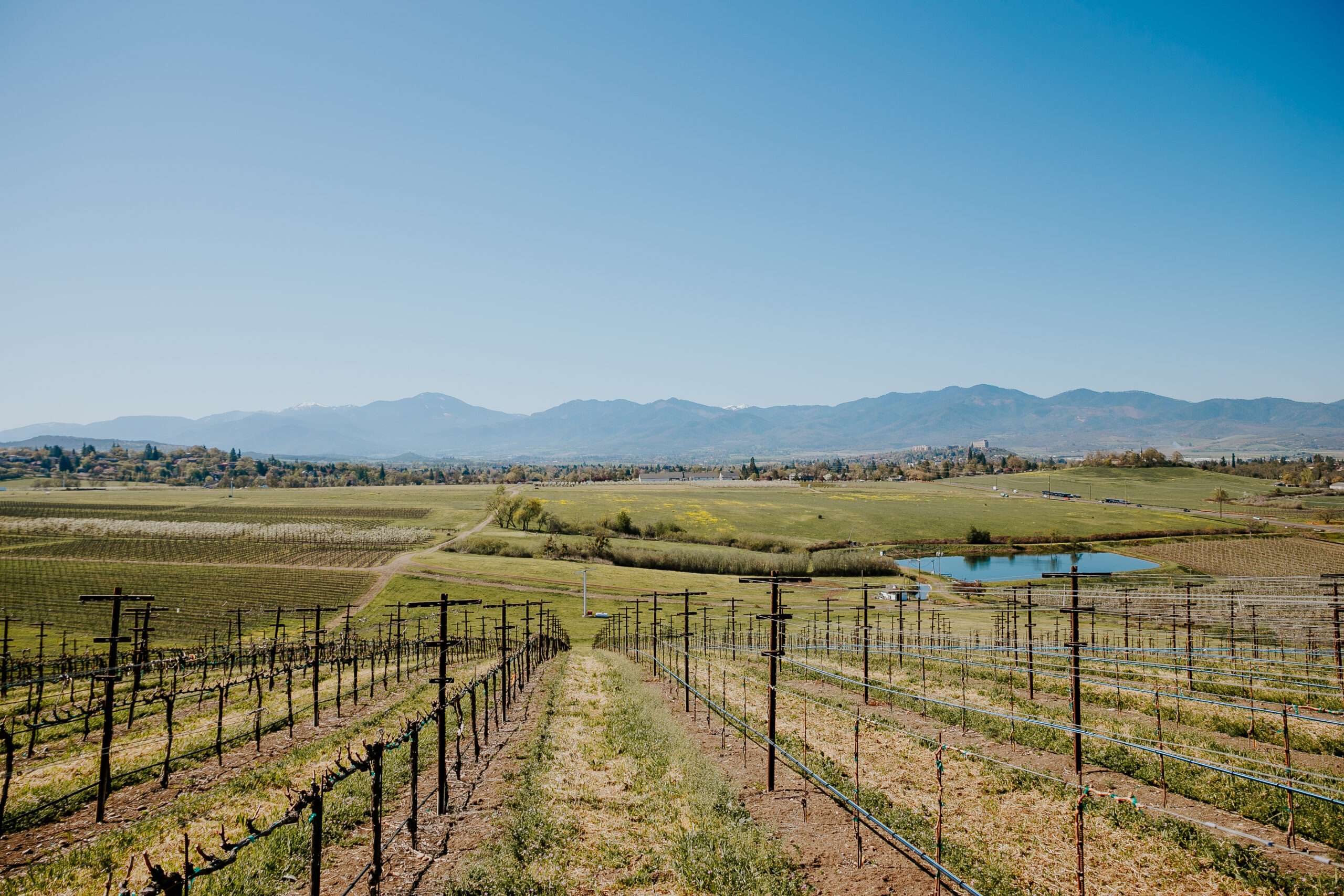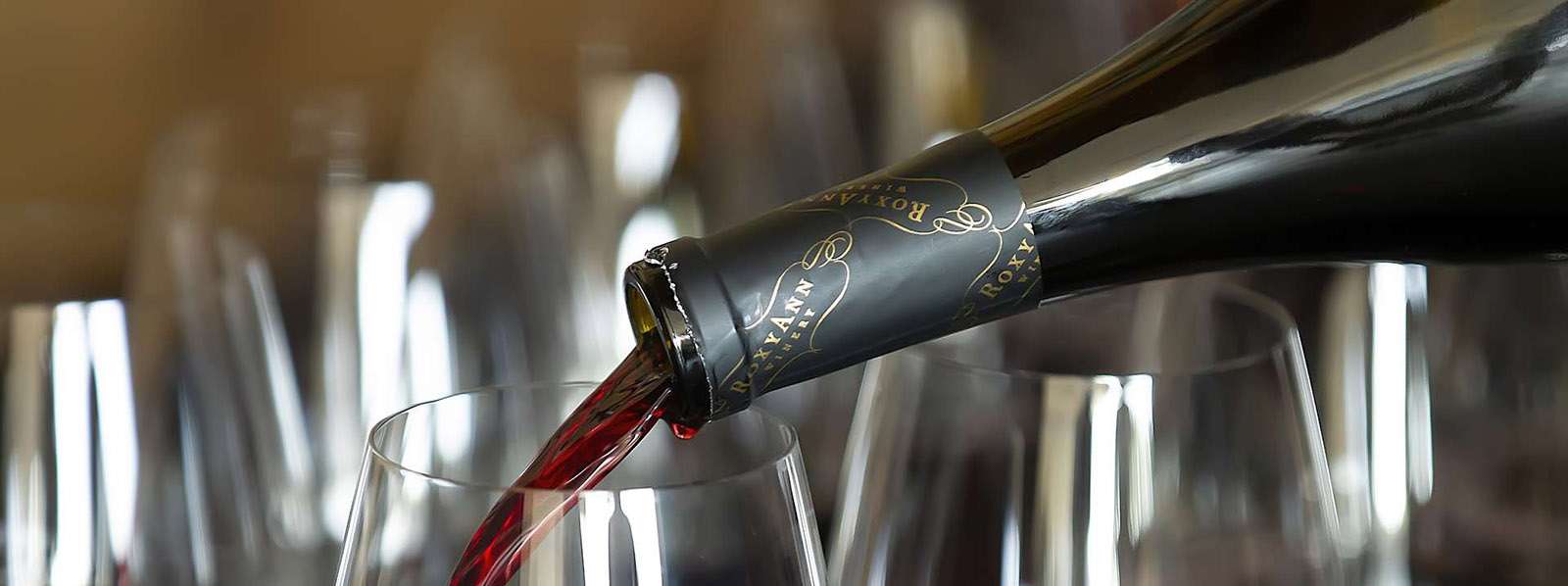
The New Frontier for American Malbec by The Vintner Project
We were thrilled to be featured in this writeup on Malbec in the U.S. by The Vintner Project! Check it out!
The New Frontier for American Malbec by The Vintner Project
In a state that has gambled on grapes like Pinot Noir and Chardonnay and won big, Oregon winemakers who have the courage to champion grapes outside those varieties are also reaping the rewards. Since the state offers immense diversity in mesoclimates, some feel you can grow just about any grape well, depending on where you are. In Southern Oregon, that grape is Malbec.
Valcan Cellars’ winemaker/owner Juan Pablo (JP) Valot, who made the first white Malbec in the country, is one of those champions. Valot has been pushing to further Malbec’s growth for the last 10 years, and feels that Malbec is a great opportunity to diversify Oregon’s value proposition when it comes to wine. “Oregon is more than just great Pinot,” he maintains.
“Malbec has the surprise factor and is a varietal that reaches across the lines,” he says. “It appeals to both Pinot lovers and Cabernet lovers. Oregon Malbec is complex with layers of red berries, dark berries, plum, wildflowers, and violets that you just don’t get in Mendoza Malbecs. And its dark color and mouthfeel is like a Cabernet. It’s a natural grape for Oregon.”
And in a state where Pinot Noir is notoriously expensive, Malbec priced at $30-$40 a bottle is a win for growers, producers, and consumers alike.
Making Malbec History

In 1961, long after Prohibition’s dry spell, wine pioneer Richard Sommer planted a variety of European vinifera, including Malbec, at HillCrest Vineyard in Oregon’s Umpqua Valley. Sommers is notably credited for paving the way for modern winemakers. But it took a while for others to catch on.
Greg Jones, renowned climatologist and CEO of Abacela Winery conducted research in Southern Oregon, concluding that a mere seven acres of Malbec were planted in the Rogue and Umpqua Valleys in 2001-2002. According to the Oregon Wine Board’s last survey in 2021, there are now over 300 acres of Malbec planted throughout the state, 172 acres of which is in southern Oregon.
“When we planted Malbec in 1995, there was likely only one other vineyard that had considered and/or planted the variety, and it was Randy Gold in the Rogue Valley,” says Jones. “We planted 1.5 acres in 1995 and produced what we think was the first 100% varietal Malbec wine in Oregon in 1997.”
“Since we’ve been growing it for so long – this will be our 28th year – I think it’s proven that it can certainly thrive here,” says Abacela Winery’s general manager Gavin Joll. “It’s nice to see it garnering more attention and gaining popularity with consumers, so I hope that trend continues. As it gains more popularity, more winemakers will look for Malbec fruit and more growers will plant it.”

“Malbec is like the immigrant success story,” explains Cristina Gonzales, Gonzales Wine Company’s winemaker/owner. “It starts in Bordeaux as a workhorse, a blending grape, but then goes to Argentina and sees its claim to fame as a single varietal, seeking a better life.” Now we’re seeing more plantings in the U.S. It’s like the underdog grape, gaining momentum, and becoming a more respectable grape and wine.
Gonzales feels it’s an exciting time to be a Malbec producer because Oregon is an incubator for creative winemakers – those thinking outside of the box on the expressions of what Malbec can offer. “Malbec is an up-and-coming grape that we’re starting to see more crafted as a single varietal wine,” she says. “It’s a low acid grape in general, but my goal is to pick it at a lower level of sugar to maintain its natural level of acidity.” Finding that balance of body, acid, and sugar levels is what can make it such a great food wine; and, food and wine alchemy and experiences are critical to Gonzales. “I want to make an acid-driven red wine to pair with foods,” she says. “And it allows for the ageability of my wines.”
Oregon vs. The World

“We planted Malbec in 2004 to add complexity to our Claret, a staple for the winery,” says Chad Day, winemaker at RoxyAnn Winery. “But, it wasn’t until 2011 that we felt the wine needed to be presented as a standalone varietal. I have quickly fallen in love with Oregon Malbecs and love how different they are from Malbecs I have had from Bordeaux or Argentina.”
“When you look at and taste Malbec from Oregon compared to South America, I think one of the biggest differences is fruit and color extraction,” says Day. “Argentinian Malbecs have an intensity to them that is quite a bit different than Southern Oregon Malbec.” He characterizes the Malbec from their vineyard as bridging that gap between New World and Old World Malbec, a wine with nice intensity of fruit and balanced tannins.
Peter William Vineyards planted Malbec on their hot, south-facing hillside vineyard in Southern Oregon in 2016. “We respect the big, bold style of Argentina Malbec and Cahors in France,” says Peter William Vineyards’ marketing director Fred Gold. “Some of our neighbors make excellent wines in this style. Ours is still big and bold, but intentionally not quite as huge as those wines; we like to think that it’s closer to a Bordeaux style. It still has lots of fruit, but with some elegance and finesse.”

Gonzales believes her Malbecs are very different from French or Argentinian Malbec. “I make what I call naked Malbecs—I only use neutral barrels, so there’s no oak influence, with native ferments.” Her wines are acid-driven and very fruit-forward; there is nothing besides the fruit and she likes the integrity of that. “Other producers like to give some oak influence, but in my case, not only can’t I afford new oak barrels, I really like to showcase Malbec for that grape, with nothing behind it, all on its own,” she says. “It allows me to tell the story about where the grapes are from.” She feels that the people who are working the land show up in the grapes themselves. “I want to hold onto everything that was captured when that grape was picked.”
Why Oregon Malbec?
Valot grew up surrounded by Malbec in Mendoza. “I grew up in the right moment,” he says. “In the early 90s and 2000s, Malbec from Argentina took off and gained worldwide recognition. I got lucky, because, before I went to college, Cabernet Sauvignon was king. I came to Oregon to make Pinot, to try a few vintages here.” In 2003 he decided to stay. When he started working for Sylvan Ridge, they had a few tons of Malbec from Rio Vineyards and he loved it. “From then on, I’ve been amazed by the quality,” he says.

At the time, at Del Rio, they didn’t get fruit every year. “One of the challenges was getting the right clones that would give a good fruit set,” says Valot. “Then we found the right clones, and then more people started growing Malbec, with better yields.”
Valot says he works with 15 different varieties, but the one he doesn’t have to worry about is Malbec. “Malbec is the perfect child; it gives you a lot without you doing much,” he explains. “It has a nice nose, bouquet, and natural acidity, better than Argentina where winemakers have to tweak it.”
In 2002, Valot started working in the lab at Willamette Valley Vineyards. They had a small amount of Malbec in a 45 gallon container. “If this is all your Malbec, Argentina will have no problem,” Valot recalls thinking. The second time he worked with Oregon Malbec, for Sylvan Ridge in 2005, it was in a more serious way. Like France, Malbec was originally used in blends in Oregon, its acidity making wines juicier and more refreshing. In 2007, Sylvan Ridge made their first varietal Malbec, starting with just 25 cases. The wine became so popular, production immediately jumped to 1000 cases. “Malbec is their most popular wine to this date,” says Valot. “Malbec was the star.”

Valot now makes nine different Malbecs under his own label. “It’s good both in the vineyard and the cellar, and then the consumer loves to drink it ‘cause it tastes good,” he says. “It’s the perfect grape.” Valot has been flexing his winemaking muscles pushing the boundaries of what’s traditionally done with the grape. Aside from the traditional red Malbec and the aforementioned innovative white Malbec, he also makes red sparkling Malbec, Piquette of Malbec, white Malbec Pétillant Naturel (the first in the world), red Malbec Pétillant Naturel (also the first), Champagne Noir Malbec, and Champagne White Malbec, made in the traditional method and coming soon.
Gonzales first started making Malbec because it was the first wine she fell in love with in Argentina. “I was there backpacking and studying abroad, living in Chile, but we’d travel to Mendoza and go wine tasting,” she says. “It was there, when we were wine tasting on the weekend, that I tasted the house wine. It was a complete sensory experience that encompassed the wine: the music, the food, and the whole place. It just drew me in.” When she came back to the States and moved to Oregon, she was working with a friend at A to Z Wineworks, who was also a Malbec lover. “ We decided to get a ton of Malbec (from Yakima, WA) and make some wine in 2009. But then I found Randy Gold’s vineyard in Southern Oregon and things really took off.” She makes red and, after gaining permission from Valot (whom she calls the “Godfather of White Malbec”), makes a stunning white Malbec as well.
A Region Primed for Growth

Southern Oregon’s climate is quite distinct and tends to be significantly hotter when compared to the Willamette Valley. Malbec happens to be one of the grapes that withstands the heat quite well. But Southern Oregon also has the marine influence, with coastal air and winds that cool the vines down at night. During the day, the intense heat helps develop the grape’s flavors and sugars, but the cooler evenings allow them to rest and not get robustly ripe. “Given the locations of my vineyards in southern Oregon, the marine influence helps maintain acids and flavors, and characters develop without becoming overly mature,” says Gonzales.
“Southern Oregon Malbecs can have a subtle core of earthiness,” says Rob Folin, winemaker/owner of Ryan Rose Wine. “Not funky, just earthy, like a fresh-tilled field. And there is always the dark and blue fruits there as well.”

“From a Southern Oregon perspective, the Malbec grape is another tool we have to show how this area does great with lots of varieties,” says Folin. “You will start seeing more vineyard-designated Malbecs in the near future. This grape is highly malleable allowing the winemaker to enhance or subdue certain characteristics to show their tastes.” He suggests that you find a winemaker you like and try their Malbec. “I bet you will be happy. It is definitely a great blending variety and can help add weight and fruitiness to standard bordeaux blends. On its own, Syrah fans will love it and even Pinot fans will find it difficult to not enjoy it.”
As climate change impacts vineyards, “Maybe we’ll even see it in the Willamette Valley in the near future,” says Valot. “Especially for sparkling wine programs. If we can get 25 Brix with Pinot Noir in the Willamette Valley, we can do it with Malbec. It’s not a late-ripening grape, like Cabernet Sauvignon.”
Valot tells any Oregon winegrower who will listen: “You have to make room for Malbec, it just has great potential for the long term.”
Malbec in the City

Aimed at spreading the gospel of Oregon Malbec, Valot founded Malbec in the City in 2023, a Portland tasting event highlighting Malbec producers from across the state. “I think Oregon is the U.S. Malbec capital and I not only wanted to show people how much Malbec is produced here, but also that it’s high quality across the board. Which means that Malbec is good in Oregon.” Valot is planning for this to be an annual event and may even take the show on the road.
“Ever since the first Malbec vines were planted in the Umpqua Valley by Richard Sommer in 1961, people have been infatuated with Oregon’s expression of this Bordeaux grape’s characteristics,” says President of the Oregon Wine Board’s Tom Danowski. “You can see by the interest in Malbec in the City, with 250+ attendees on a sunny Sunday in Portland and more than 20 winemakers from Southern Oregon to Hood River, that interest in Malbec continues to grow.”



No Comments